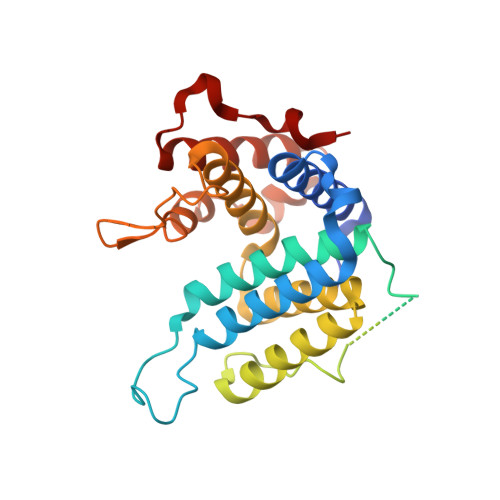On the catalytic mechanism of dimeric dUTPases.
Hemsworth, G.R., Gonzalez-Pacanowska, D., Wilson, K.S.(2013) Biochem J 456: 81-88
- PubMed: 24001052
- DOI: https://doi.org/10.1042/BJ20130796
- Primary Citation of Related Structures:
4DK2, 4DK4, 4DKB, 4DL8, 4DLC - PubMed Abstract:
The Tritryps Trypanosoma brucei, Trypanosoma cruzi and Leishmania donovani are responsible for great morbidity and mortality in developing countries. Their dimeric dUTPases are members of the all-α NTP pyrophosphohydrolase family and represent promising drug targets due to their essential nature and markedly different structural and biochemical properties compared with the trimeric human enzyme. In the present paper we describe the structure of the T. brucei enzyme in open and closed conformations. Furthermore, we probe the reaction mechanism through the binding of transition state mimics both in solution and in the crystal. 31P-NMR and tryptophan fluorescence quenching in the presence of AlF3 and MgF3- identified which phosphate is subject to nucleophilic attack by a water molecule. The structures in complex with two transition state analogues confirm that the nucleophilic attack occurs on the β-phosphate in contrast with the α-phosphate in the trimeric enzymes. These results establish the structural basis of catalysis of these important housekeeping enzymes and has ramifications for the wider all-α NTP pyrophosphohydrolase family.
Organizational Affiliation:
*Structural Biology Laboratory, Department of Chemistry, University of York, Heslington, York YO10 5DD, U.K.

















